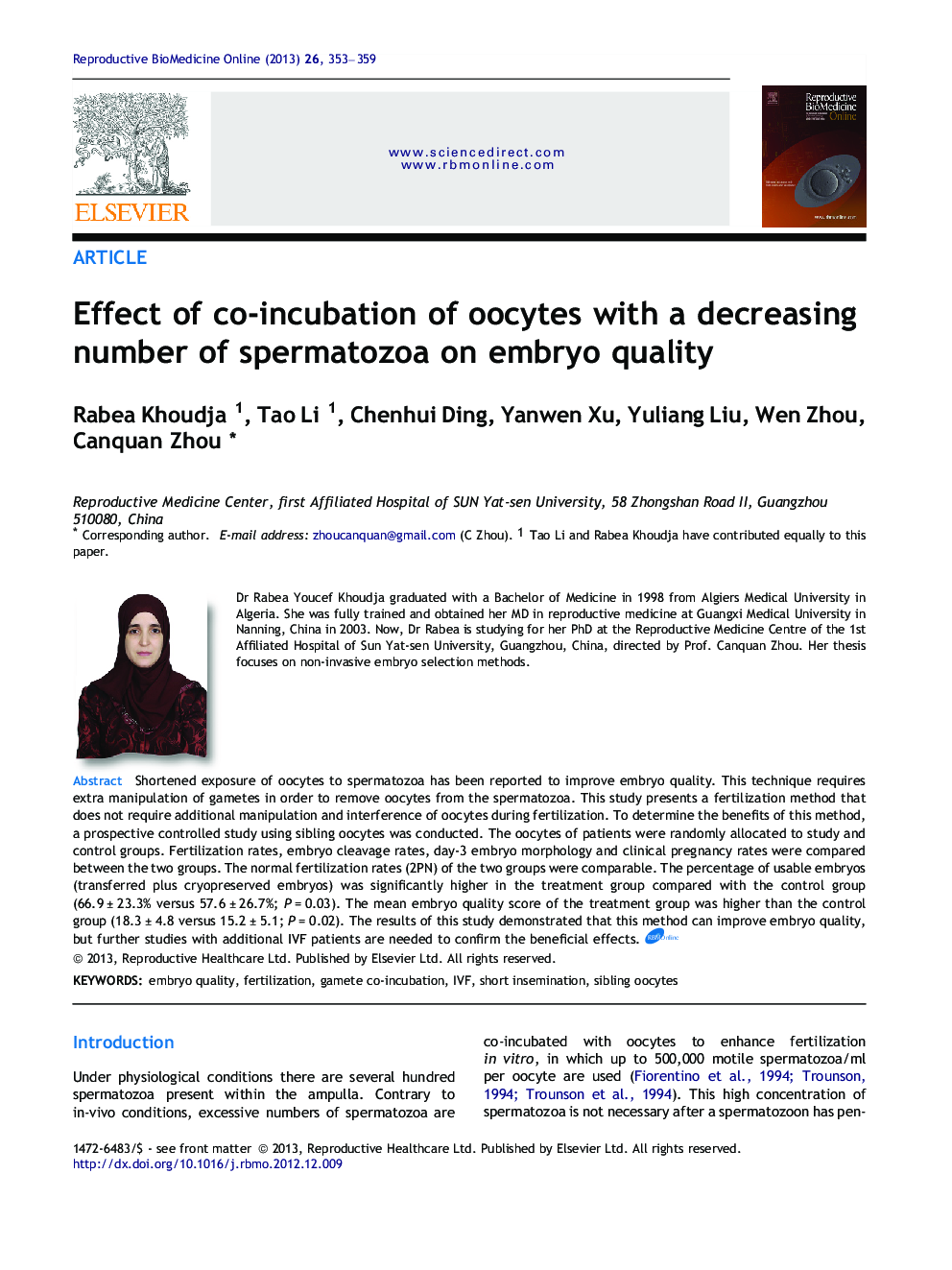| Article ID | Journal | Published Year | Pages | File Type |
|---|---|---|---|---|
| 6189176 | Reproductive BioMedicine Online | 2013 | 7 Pages |
Shortened exposure of oocytes to spermatozoa has been reported to improve embryo quality. This technique requires extra manipulation of gametes in order to remove oocytes from the spermatozoa. This study presents a fertilization method that does not require additional manipulation and interference of oocytes during fertilization. To determine the benefits of this method, a prospective controlled study using sibling oocytes was conducted. The oocytes of patients were randomly allocated to study and control groups. Fertilization rates, embryo cleavage rates, day-3 embryo morphology and clinical pregnancy rates were compared between the two groups. The normal fertilization rates (2PN) of the two groups were comparable. The percentage of usable embryos (transferred plus cryopreserved embryos) was significantly higher in the treatment group compared with the control group (66.9 ± 23.3% versus 57.6 ± 26.7%; P = 0.03). The mean embryo quality score of the treatment group was higher than the control group (18.3 ± 4.8 versus 15.2 ± 5.1; P = 0.02). The results of this study demonstrated that this method can improve embryo quality, but further studies with additional IVF patients are needed to confirm the beneficial effects.A new method is presented which decreases the negative effects of an excessive number of spermatozoa on oocytes during the fertilization process without any manipulation and interference of oocytes. The method is easy to perform in a clinical IVF laboratory and led to improved embryo quality in our sibling-oocyte controlled study.
